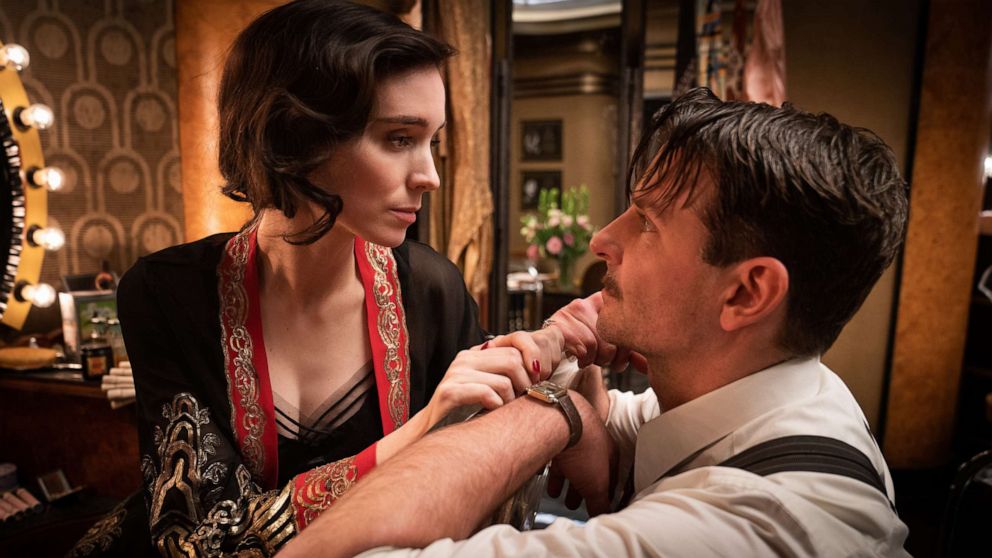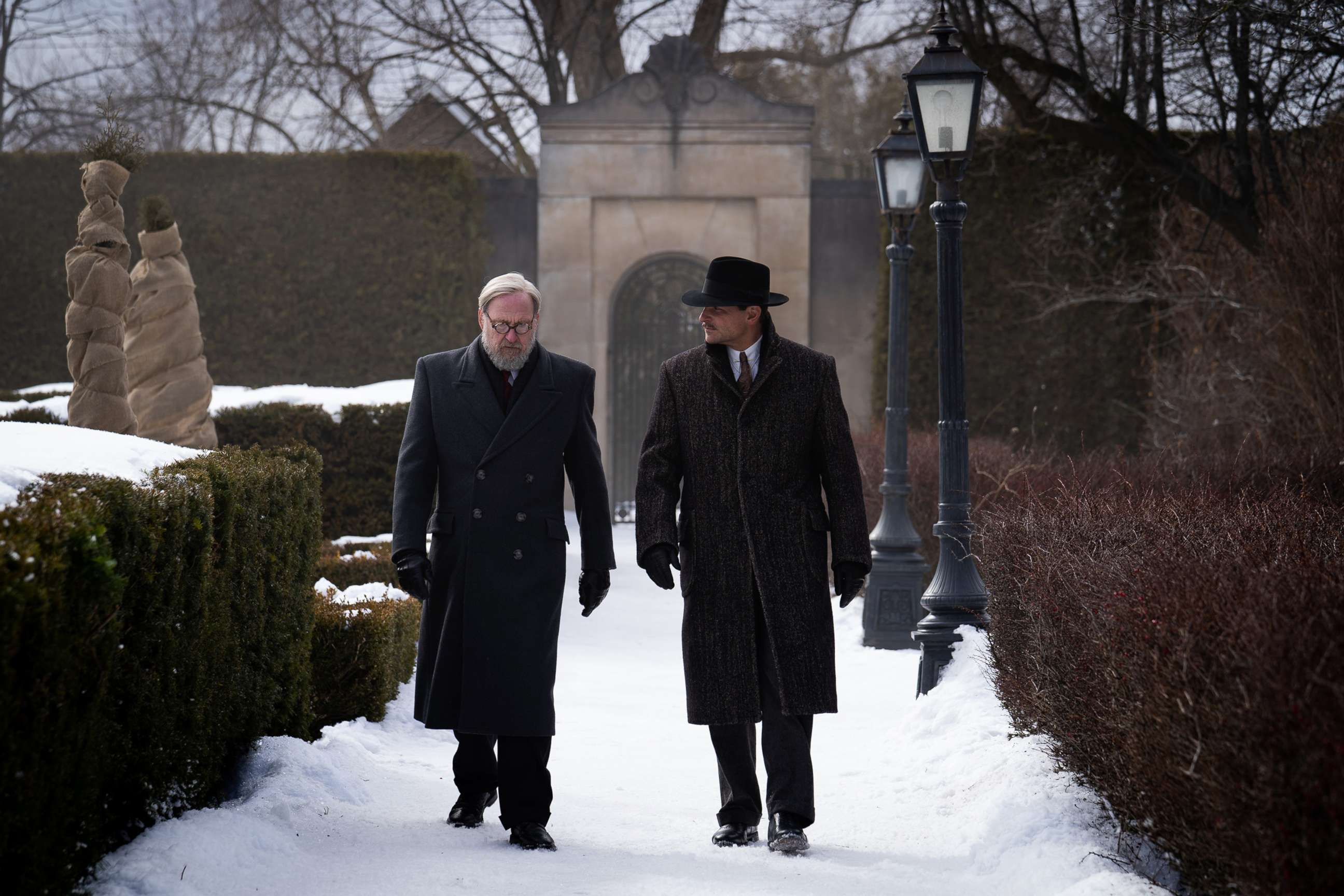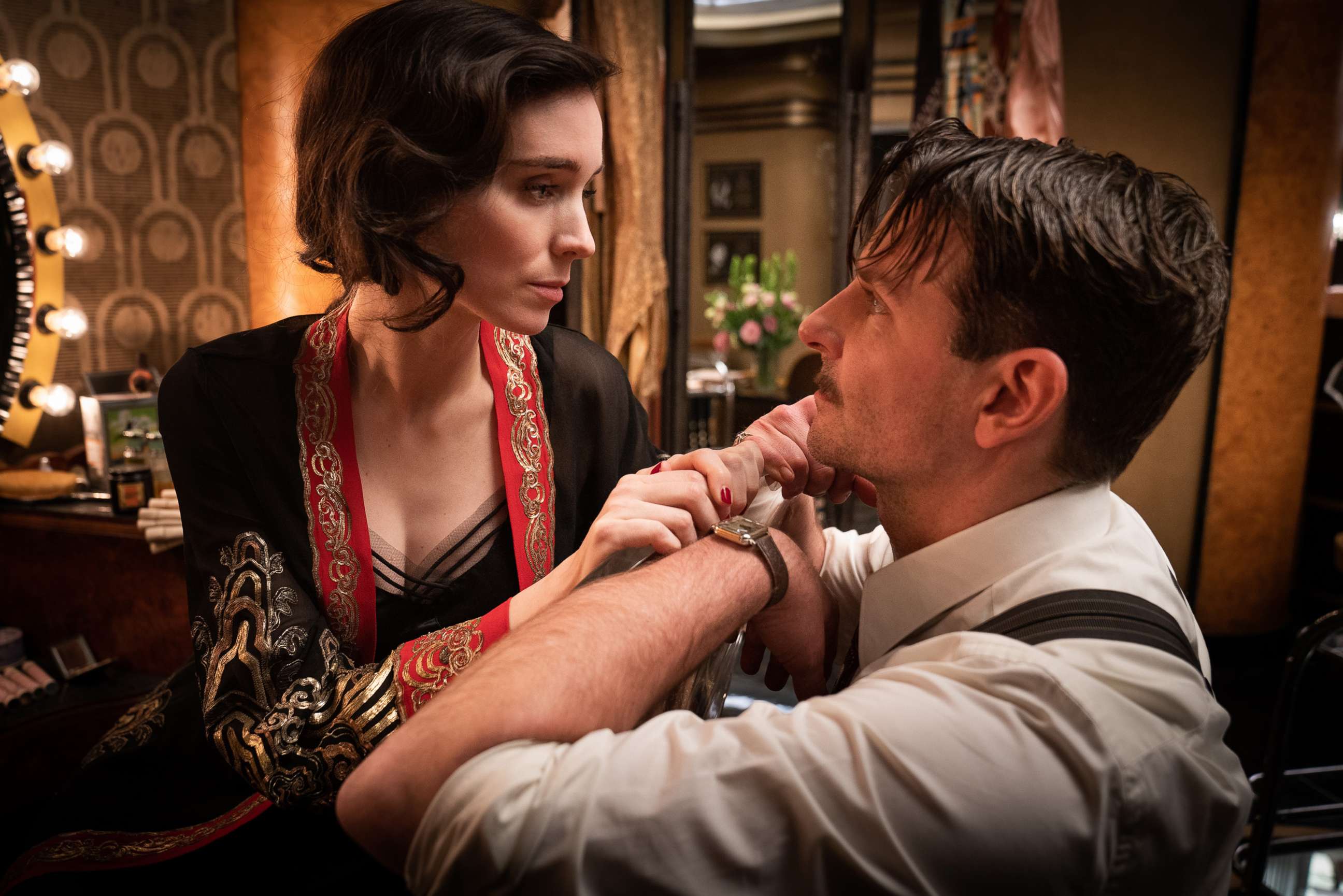Review: 'Nightmare Alley' has flashes of brilliance but falls far short
This mesmerizing misfire never illuminates the dark night of its tortured soul.

What do you call a movie that’s breathtaking in every surface detail but hollow at its core? That’s “Nightmare Alley,” a rare letdown from Oscar winner Guillermo Del Toro (“The Shape of Water”) now in theaters where its visual magic soars even as disappointment sinks in.
Still, subpar del Toro is better than most filmmakers at their peak. The director, who wrote the screenplay with Kim Morgan, the excellent film critic (they married earlier this year), rightly admires William Lindsay Gresham’s Depression-era novel that sparked a superb 1947 film noir in which Tyrone Power showed he had acting chops as well as Hollywood hotness.

Now it’s Bradley Cooper, a movie star who long ago earned his acting stripes, taking the lead role of Stanton Carlisle, a born con artist who finds a home in a low-rent traveling carnival run by Clem Hoatley (Willem Dafoe) who’s obsessed with sideshow artifacts like a fetus in a bottle.
“Nightmare Alley” is creepy as hell, but there are none of the supernatural intrusions common in del Toro films. The monsters this time are of the human variety. The hellboy played by Cooper doesn’t need flaming skin and horns to indicate the moral rot eating at him.
Stan knows the freaks and geeks at the carnival are scam artists and he wants in. He’s quick to pick up mind reading ploys from boozehound Pete (David Strathairn) who’s developed a code with his psychic wife Zeena (Toni Colette) that keeps suckers on the hook.
While Zeena seduces easy-on-the-eyes Stan, Pete teaches him the tricks of the mentalist trade. Strathairn works wonders as the father figure who offers a closeness Stan’s real father never could. His scenes with Cooper attain an intimacy the rest of the film only fitfully achieves.
Of course, the carny atmosphere fascinates del Toro as it does us, with a strongman (Ron Perlman) along to protect Molly (Rooney Mara), who uses electrical shocks in her act to hustle the rubes. At the low end is the geek, usually a drunk that Clem can convince to demean himself by biting the heads off of live chickens. Is the foreshadowing that obvious? It is.
The carny scenes are undeniably spellbinding. And del Toro seems understandably reluctant to leave them. But the plot beckons, which means that Stan—Molly in tow as his assistant and lover—shuffles off to snowy Buffalo to con bigger, richer suckers out of their cash.

It’s here that Stan hooks up with Lilith Ritter, a high-society shrink played by the great Cate Blanchett with a femme fatale allure that singes the screen. She sure puts the burn on Stan. Her office is a gleaming microcosm of art-deco splendor that Lilith uses to trap him in her web. Stan believes Lilith’s client list will provide him with a big score. Little does he know.
“You run a racket, same as me,” Stan tells red-lipped Lilith between steamy smooches. The prime mark is industrialist Ezra Grindle (a menacing Richard Jenkins) whose desire to rekindle a relationship with a dead woman he’s abused (one of many) leads to Stan’s trial by fire.
It’s not until the film’s knockout finale that Cooper drops the veil of chilly indifference that mutes his performance and yields few dramatic dividends. When Stan, a lifelong non-drinker, takes his first sip of demon alcohol there should be fireworks. But the dreary gloom that falls over the film seals off Stan from the real world and genuine emotion.
There are pleasures in this updated film noir in which women refuse to be suckered. Instead of being slapped, they do the slapping and the surviving. Molly, who packs a mean punch, realizes she belongs with her carny family. She can almost hear them whisper, “One of us.” Del Toro also counts himself with that tribe. Do you? The film’s impact depends on how you answer.
What a shame that “Nightmare Alley” is more an outline for a film than a living, breathing, dangerous thing. Shock and gore are no substitutes for the war between flesh and spirit in such del Toro classics as “The Devil’s Backbone” and “Pan’s Labyrinth.” Despite flashes of hallucinatory brilliance, this mesmerizing misfire never illuminates the dark night of its tortured soul.




